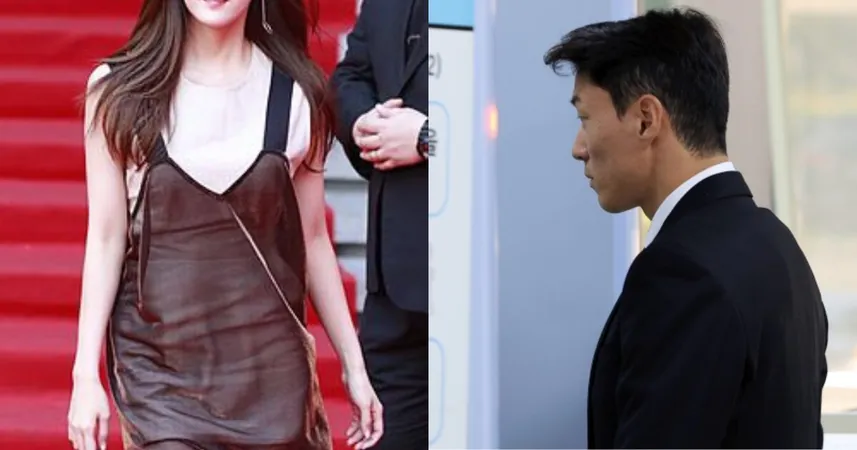
Revolutionary Forest Design: The Key to Tackling Climate Change!
2025-07-13
Author: John Tan
Planting trees might seem straightforward, but the success of this strategy hinges on intricate details—like the types of species chosen and their arrangement within the forest. These factors critically shape the climate benefits we can harness.
Thanks to advanced computer simulations, scientists can now explore virtual forests, testing various layouts before planting a single tree. A pivotal study, led by Rémy Beugnon at the German Centre for Integrative Biodiversity Research (iDiv), informed us that how we arrange trees is nearly as crucial as the species selected.
Mixing it Up: Why Diversity Matters!
Researchers highlight a concept known as spatial heterogeneity, which refers to a diverse mix of species in a forest stand. When species are mixed, neighboring trees compete for different nutrients and light, ultimately benefiting underground ecosystems.
Beugnon's team analyzed eight subtropical species through thousands of simulated forest plots. The findings revealed that randomized layouts significantly enhanced nutrient distribution, promoting both growth and recycling. In fact, random planting designs reportedly increased tree biomass by 11% compared to traditional clustered layouts!
Random Designs Yield Surprising Rewards!
The forest simulations showed that shuffling tree species led to an 11% increase in aboveground biomass over block planting designs, even with identical numbers of trees. This boost occurred thanks to a harmonious mix of tall shade-tolerant trees alongside shorter light-loving variants, optimizing resource use.
A 2023 global analysis of over 10,000 plots confirmed that adding each new tree species contributed approximately one-third of a ton of extra wood per acre, highlighting the benefits of canopy complexity!
Enriching the Soil—A Natural Fertilizer!
In a mixed forest, fallen leaves serve as vital nutrient sources rather than waste. The study’s models indicated that mixed canopies promote a more even distribution of litter across the forest floor, enhancing nutrient availability and reducing hot or cold spots.
After nine months, carbon loss from litter increased significantly from 36.5% in block plantings to 47.1% in random mixes, marking a notable shift in the soil’s carbon management.
A Perfect Compromise: Line Planting!
Researchers experimented with a hybrid approach called 'line planting,' where single or double rows of varying species were alternated. This method keeps machinery lanes unobstructed while still promoting neighbor mixing along edges. The simulations demonstrated that this method decomposed 40.4% of litter carbon in the same timeframe, providing a practical yet beneficial alternative.
More Species Means Greater Gains!
While layout is pivotal, adding species amplifies the benefits. In mixed forests, each additional species magnifies the advantages, while in block designs, the diversity effect diminishes almost entirely.
In randomized plots containing eight diverse species, decomposition rates soared over ten percentage points compared to similarly grouped blocks, underscoring the importance of diverse planting.
A Call to Action for Policymakers!
With approximately 470 million acres earmarked for restoration globally, even a modest 10% boost in biomass could translate into gigatons of carbon sequestered. Choosing the right forest design initially is an easy yet impactful strategy in the fight against climate change.
In their continued efforts, Beugnon and his team plan to conduct long-term field tests to analyze how mixed layouts weather challenges like windstorms and pest invasions.
As we forge ahead, it's essential for policymakers drafting reforestation incentives to incorporate spatial diversity standards into grant guidelines, encouraging forest designs that adhere to these progressive principles.
This groundbreaking research, published in Nature Communications, points to a simple yet powerful lever for enhancing our climate toolkit through smarter forest design.





 Brasil (PT)
Brasil (PT)
 Canada (EN)
Canada (EN)
 Chile (ES)
Chile (ES)
 Česko (CS)
Česko (CS)
 대한민국 (KO)
대한민국 (KO)
 España (ES)
España (ES)
 France (FR)
France (FR)
 Hong Kong (EN)
Hong Kong (EN)
 Italia (IT)
Italia (IT)
 日本 (JA)
日本 (JA)
 Magyarország (HU)
Magyarország (HU)
 Norge (NO)
Norge (NO)
 Polska (PL)
Polska (PL)
 Schweiz (DE)
Schweiz (DE)
 Singapore (EN)
Singapore (EN)
 Sverige (SV)
Sverige (SV)
 Suomi (FI)
Suomi (FI)
 Türkiye (TR)
Türkiye (TR)
 الإمارات العربية المتحدة (AR)
الإمارات العربية المتحدة (AR)